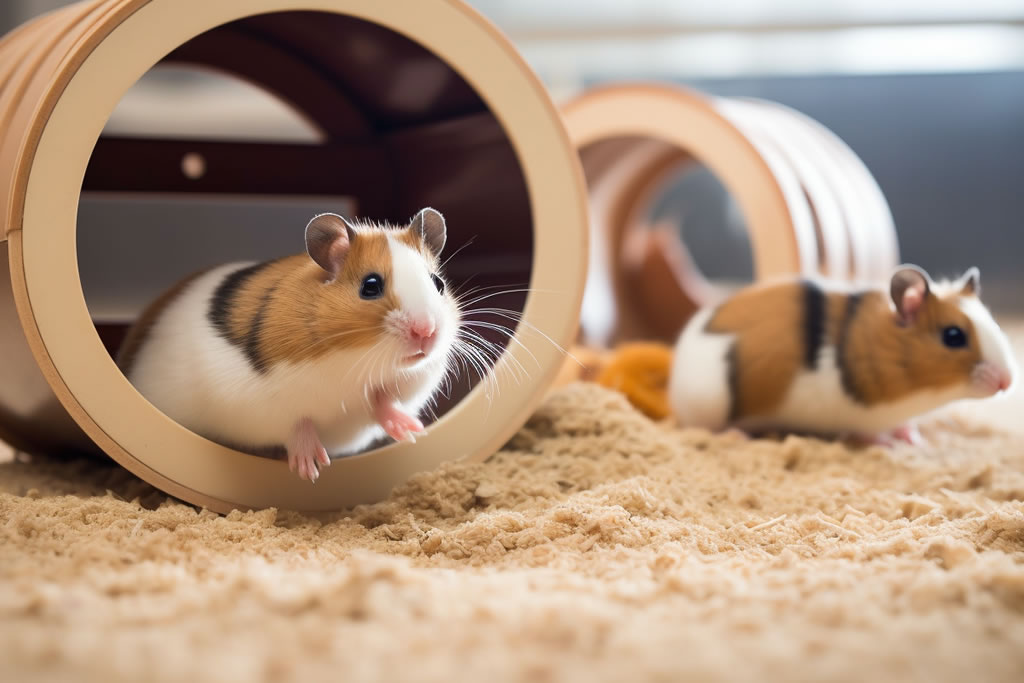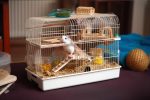Let’s be real—my first hamster was a disaster. I walked into Petco for cat food and walked out with a “friendly” Roborovski named Flash. Three escape attempts and one emergency vet bill later, I’m here to save you from rookie mistakes. Buckle up for the real guide to starter hamsters, complete with caffeine-fueled regrets and hard-earned wisdom.
The Starter Hamster Hall of Fame (and Shame)
Syrian Hamsters: The Golden Retrievers of Rodents
My Experience: Adopted a Syrian named Meatball. He now runs my life (and Instagram).
| Trait | Pet Store Hype | Cold Hard Truth |
|---|---|---|
| Size | “Easy to handle!” | Literal palm-sized chonk |
| Speed | “Slow and gentle” | Olympic sprinter at 3AM |
| Social Needs | “Loves solitude!” | Will side-eye you for attention |
| Bite Factor | “Rarely nips” | Fingers are confused for carrots |
Pro Tip: Buy a locking cage. My Syrian once tunneled out using a Cheerio as a shovel.
Dwarf Hamsters: The “Cute” Trap
My Mistake: Thought dwarfs = easier. Adopted two. They declared cage warfare.
Campbell’s vs. Winter White Dwarfs
| Feature | Campbell’s | Winter White |
|---|---|---|
| Temperament | Grumpy philosopher | Moody artist |
| Treat Bribery | Sells soul for sunflower | Suspicious of offerings |
| Cage Drama | Passive-aggressive | Full-on soap opera |
| Vet Bill Potential | Diabetes-prone | Respiratory issues |
Lesson Learned: Dwarfs are like roommates—some get along, others steal your socks.
Roborovski Hamsters: The Ninjas
My Regret: Named one Zoom. Last seen in 2019 behind the fridge.
Robo Reality Check
| Expectation | Reality | Survival Skill Required |
|---|---|---|
| “Fun to watch!” | Seen 3 times total | Night-vision goggles |
| “Low maintenance” | Requires Sahara-like sand baths | Stock in reptile sand |
| “Playful” | Escape artistry 24/7 | PhD in duct tape repairs |
The Starter Hamster Cheat Sheet
Cost Comparison: First Year
| Breed | Initial Setup | Hidden Costs | Emotional Damage |
|---|---|---|---|
| Syrian | $200 | $150 wheel upgrades | Sleep deprivation |
| Dwarf | $180 | $300 vet bills (diabetes) | Cage WWE referee fatigue |
| Roborovski | $150 | $500 home rodent-proofing | Existential dread |
Handling Difficulty Scale
1 (Teddy bear) —— 10 (Furry piranha)
- Syrian: 3/10 (until you wake them)
- Dwarf: 6/10 (speed + attitude)
- Robo: 9/10 (basically a ghost)
Habitat Setup: What Actually Works
Syrian vs. Dwarf Cage Requirements
| Item | Syrian Needs | Dwarf Needs |
|---|---|---|
| Wheel Size | 12” (salad plate) | 8” (but they’ll still complain) |
| Bedding Depth | 10”+ (mine digger) | 6” (lazy burrowers) |
| Toy Preference | Cardboard castles | Stolen earrings |
| Nighttime Noise | Wheel marathons | Cage bar acrobatics |
DIY Hack: Use a glass baking dish as a sand bath—prevents Robos from flinging grit everywhere.
The 5-Second Health Check (Pet Store Edition)
- Butt Inspection:
- Dry = good
- Sticky = wet tail (run away)
- Ear Scan:
- Pink & clean = healthy
- Crusty = mites (nope)
- Sneak Attack Test:
- Tap cage gently. Reacts? = alert
- No reaction? = likely sick
- Grip Check:
Offer finger. Weak grip = possible paralysis
Taming Timeline: Reality vs. TikTok
| Method | TikTok Promise | Real-World Timeline |
|---|---|---|
| Hand-feeding | “Bond in 3 days!” | 3 weeks + bandaids |
| Free-roaming | “He’ll cuddle!” | He’ll claim your vents |
| Talking softly | “Builds trust” | You’ll question your sanity |
Pro Tip: Wear the same socks for two days, then leave them in the cage. They’ll bond with your stench.
When to Call It Quits
Red Flags in Potential Hamsters
- The Houdini: Escapes during 10-second store demo
- The Screamer: Squeaks like a dog toy when touched
- The Gollum: Obsessively hoards kibble in cheeks
- The Zombie: Sleeps through loud noises (probably sick)
Starter Pack Essentials
What You Actually Need
- Locking lid cage: $50+
- Ceramic food dish: $5 (plastic = chew toy)
- Silent wheel: $35 (sanity saver)
- Toilet paper rolls: Free (their favorite thing)
- Wine: Priceless (for you)
Final Verdict:
After fostering lot of hamsters, here’s my take:
- First-time owners: Go Syrian. They’re forgiving.
- Masochists: Try dwarf pairs. Stock up on Band-Aids.
- Adrenaline junkies: Roborovski. You’ll never relax again.



